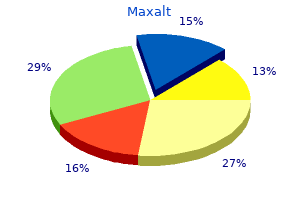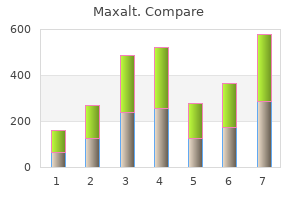





|
STUDENT DIGITAL NEWSLETTER ALAGAPPA INSTITUTIONS |

|
"Order maxalt 10mg otc, sports spine pain treatment center hartsdale ny".
Y. Konrad, M.A., Ph.D.
Clinical Director, Cooper Medical School of Rowan University
Kwashiorkor presents a Ocular hypertelorism pain treatment for burns discount 10mg maxalt with visa, Pulmonary Stenosis pain treatment with opioids discount maxalt 10mg with mastercard, Abnormal genitalia pain treatment in multiple myeloma cheap 10 mg maxalt amex, Retardation of growth and Deafness narcotic pain medication for uti discount maxalt 10mg on-line. Chloasma Chloasma is a patterned pigmentation of the face occurring in women during pregnancy or when taking oral contraceptives. The areas of increased pigmentation are well defined, symmetrical and their edges are often scalloped (the mask of pregnancy;. Most of the extra melanin lies in the epidermis, but there is some in the dermis too, making treatment more difficult. Chloasma should be differentiated from a phototoxic reaction to a scented cosmetic or to a drug. Treatment is unsatisfactory, although some find bleaching agents that contain hydroquinone helpful. After this, maintenance treatment should be with preparations containing no more than 2% hydroquinone. Minocycline can leave blue-black drug deposits in inflamed acne spots on the shins or on the mucosae. Poikiloderma Poikiloderma is the name given to a triad of signs: reticulate pigmentation, atrophy and telangiectasia. It is not a disease but a reaction pattern with many causes including X-irradiation, photocontact reactions, and connective tissue and lymphoreticular disorders. Psoralens are used in the photochemotherapy of psoriasis (Chapter 5) and, more rarely, of vitiligo. The education of those living in sunny climates or holidaying in the sun has already reaped great rewards here. Successful campaigns have focused on regular self-examination and on reducing sun exposure by avoidance, clothing and sunscreen preparations (Figs 18. Tumours of the epidermis and its appendages Benign Viral warts these are discussed in Chapter 13, but are mentioned here for two reasons: first, solitary warts are sometimes misdiagnosed on the face or hands of the elderly; and, secondly, a wart is one of the few tumours in humans that is, without doubt, caused by a virus. Seventy per cent of transplant patients who have been immunosuppressed for over 5 years have multiple viral warts and there is growing evidence that immunosuppression, viral warts and ultraviolet radiation interact in this setting to cause squamous cell carcinoma (p. Squamous cell papilloma this common tumour, arising from keratinocytes, may resemble a viral wart clinically. Each individual lesion might look worryingly like a malignant melanoma but, in the numbers seen here, the lesions must be benign. Seborrhoeic keratosis (basal cell papilloma, seborrhoeic wart) this is a common benign epidermal tumour, unrelated to sebaceous glands. Presentation Seborrhoeic keratoses usually arise after the age of 50 years, but flat inconspicuous lesions are often visible earlier. Occasionally they can be confused with a pigmented cellular naevus, a pigmented basal cell carcinoma and, most importantly, with a malignant melanoma. Some Afro-Caribbeans have many dark warty papules on their faces (dermatosis papulosa nigra;. Treatment Seborrhoeic keratoses can safely be left alone, but ugly or easily traumatized ones can be removed with a curette under local anaesthetic (this has the advantage of providing histology), or by cryotherapy. Presentation and clinical course Skin tags occur around the neck and within the major flexures. Treatment Small lesions can be snipped off with fine scissors, frozen with liquid nitrogen, or destroyed with a hyfrecator without local anaesthesia. Skin tags (acrochordon) these common benign outgrowths of skin affect mainly the middle-aged and elderly. Skin tags are most common in obese women, and rarely are associated with tuberous sclerosis (p. Congenital melanocytic naevi Acquired melanocytic naevi Junctional naevus Compound naevus Intradermal naevus Spitz naevus Blue naevus Atypical melanocytic naevus 257. A genetic factor is likely in many families, working together with excessive sun exposure during childhood.

Brain Stem Syndromes Olive Dorsal nucleus of X (parasympathetic motor fibers) Skull Base Syndromes the site of a lesion at the base of the skull can often be deduced from the pattern of cranial nerve involvement bayhealth pain treatment center dover de maxalt 10mg cheap. Cavernous sinus Sphenoid wing syndrome (Foster-Kennedy syndrome) Internal carotid a wrist pain treatment tendonitis generic 10 mg maxalt amex. Pituitary gland and stalk Dorsum sellae urmc pain treatment center sawgrass drive rochester ny discount 10 mg maxalt with amex, posterior clinoid process Cavernous sinus syndrome Ophthalmic a anterior knee pain treatment exercises discount 10 mg maxalt fast delivery. The olfactory mucosa on either side of the nasal cavity occupies an area of approximately 2. The mucus covering the olfactory epithelium is necessary for olfactory function, because molecules interact with olfactory receptors only when they are dissolved in the mucus. Olfactory receptors located on the cilia are composed of specific receptor proteins that bind particular odorant molecules. Each olfactory cell produces only one type of receptor protein; the cells are thus chemotopic, i. Olfactory cells are uniformly distributed throughout the olfactory mucosa of the nasal conchae. The unmyelinated axons of all olfactory cells converge in bundles of up to 20 fila olfactoria on each side of the nose (these bundles are the true olfactory nerves), which pass through the cribriform plate to the olfactory bulb. Hundreds of olfactory cell axons converge on the dendrites of the mitral cells of the olfactory bulb, forming the olfactory glomeruli. Neural impulses are relayed through the projection fibers of the olfactory tract to other areas of the brain including the prepiriform cortex, limbic system, thalamus (medial nucleus), hypothalamus, and brain stem reticular formation. This complex interconnected network is responsible for the important role of smell in eating behavior, affective behavior, sexual behavior, and reflexes such as salivation. The trigeminal nerve supplies the mucous membranes of the nasal, oral, and pharyngeal cavities. Trigeminal receptor cells are also stimulated by odorant molecules, but at a higher threshold than the olfactory receptor cells. The perceived intensity of a persistent odor decreases or disappears with time (olfactory adaptation). External factors such as an arid environment, cold, or cigarette smoke impair the ability to smell; diseases affecting the nasopharyngeal cavity impair both smell and taste. The perception of smell may be qualitatively changed (parosmia) because of autonomic (hunger, stress) and hormonal changes (pregnancy) or disturbances such as ozena, depression, traumatic lesions, or nasopharyngeal empyema. Olfactory hallucinations can be caused by mediobasal and temporal tumors (focal epilepsy), drug or alcohol withdrawal, and psychiatric illnesses such as schizophrenia or depression. One nostril is held closed, and a bottle containing a test substance is held in front of the other. In this subjective test, odor perception per se is more important than odor recognition. Odor perception indicates that the peripheral part of the olfactory tract is intact; odor recognition indicates that the cortical portion of the olfactory pathway is also intact. Because there is bilateral innervation, unilateral lesions proximal to the anterior commissure and cortical lesions may not cause anosmia. Viral infections (influenza), heavy smoking, and toxic substances can damage the olfactory epithelium; trauma (disruption of olfactory nerves, frontal hemorrhage), tumors, meningitis, or radiotherapy may damage the olfactory pathway. Parkinson disease, multiple sclerosis, Kallmann syndrome (congenital anosmia with hypogonadism), meningoencephalocele, albinism, hepatic cirrhosis, and renal failure can also cause olfactory disturbances. Cranial Nerves 76 Olfactory Disturbances (Dysosmia) Olfactory disturbances can be classified as either quantitative (anosmia, hyposmia, hyperosmia) or qualitative (parosmia, cacosmia). Taste buds are found on the margins and furrows of the different types of gustatory papillae (fungiform, foliate, and vallate) and are specific for one of the four primary tastes, sweet, sour, salty, and bitter. Stimulation of the gustatory cell at its receptors by the specific taste initiates a molecular transduction process, resulting in depolarization of the cell. Each taste bud responds to multiple qualities of taste, but at different sensitivity thresholds, resulting in a characteristic taste profile. Complex tastes are encoded in the different patterns of receptor stimulation that they evoke.

Syndromes